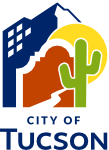Microfiche records prior to 2006 have not been completely digitized and may not be available yet on PRO. If you can not find what you are looking for please submit a records request.
Permit Review Detail
Review Status: Completed
Review Details: RESUBMITTAL - TI ALL
Permit Number - T21CM01599
Review Name: RESUBMITTAL - TI ALL
Review Status: Completed
| Review Date | Reviewer's Name | Type of Review | Description | Status | Comments |
|---|---|---|---|---|---|
| 06/01/2021 | ROBERT SHERRY | PLUMBING-COMMERCIAL | REVIEW | Reqs Change | 1. Coordinate the location of the building drain and building sewer with the site plan. [Initial comment: Provide a site drawing showing the size, route, cleanout locations, and slope of the building sewer. Show the location of the connection of the building sewer to the public sewer. Reference: Section 107.2.1, IBC 2018.] 2. A temperature limit stop does not comply with ASSE 1070. [Initial comment: Provide tempered water for the public restroom lavatory using an approved device conforming to ASSE 1070. Reference: Sections 416.5 and 607.1.2, IPC 2018.] 3. The developed pipe length from the hot water source to sink P3 in the leasing office is greater than allowed by Table C404.5.1, IECC 2018. [Initial comment: Verify that the distance from the hot water source to the hot water termination for the public lavatories complies with the requirements of Section C404.5, IECC 2018.] 4. Sizing pipes for water distribution systems using Appendix E, IPC 2018 is an accepted engineering method but Section E102.2.2 of Appendix E, IPC 2018 states that fixture units cannot be used for constant use items such as hose bibbs. A separate demand value for hose bibbs is to be added to the demand that was determined using fixture units. In addition, 19 fixture units is equivalent to a demand of 19.2 GPM (Table E103.3 (3), IPC 2018); The minimum water pressure for that address is 45.79 PSI according to Tucson Water (Section 604.6, IPC 2018); according to the architect, the water meter is nearly 200 feet from the building; the site is served by two water meters, an 1-1/2” and a 2”, not a 5/8” meter; and both meters have reduced pressure backflow preventers with pressure drops of 10 – 13 PSI. [Initial comment: Section 604.1, IPC 2018 allows water distribution systems to be designed using accepted engineering methods. Provide the source of the method used to determine the water demand and size the water distribution system.] |
| 06/01/2021 | ROBERT SHERRY | WATER | REVIEW | Reqs Change | Coordinate the location of the building entry of the water service with the plumbing plan. [Initial comment: Show the location of the water meter, backflow preventer, and the water service pipe on a site plan. Reference: Section 107.2.1 and 107.2.6, IBC 2018.] |
| 06/01/2021 | ROBERT SHERRY | MECHANICAL-COMMERCIAL | REVIEW | Reqs Change | 1. Provide the COMcheck Envelope Compliance certificate [Initial comment: Alterations of an existing, non-conditioned building shall be brought into full compliance with the 2018 International Energy Conservation Code. Demonstrate energy code compliance for the building envelope, mechanical systems, and interior lighting using calculations based on the current code (e.g. COMcheck). Reference: Section C503.2, IECC 2018.] 2. High efficiency unitary and applied heat pumps with a cooling capacity that is less than 65MBH must have a SEER 10% greater than the minimum SEER of 14. (Alternatively, you could use reduced lighting power as your additional efficiency option – the lighting design already complies with that requirement.) [Initial comment: Show how one of the “Additional Efficiency Package Options” (C406, IECC 2018) is to be accomplished. Reference: Section C401.2, IECC 2018.] 3. Specify that the thermostat must capable of automatically adjusting the start time of the HVAC equipment in order to bring the interior conditions to the desired temperature at the start of occupancy per Section C403.4.2.2, IECC 2018. [Initial comment: Show that each rooftop unit has a thermostatic control that provides for off-hour and set-back control, automatic shutdown and automatic start-up control (i.e. the thermostat is capable of automatically adjusting the start time of the HVAC equipment in order to bring the interior conditions to the desired temperature at the start of occupancy) and, if the thermostat does not require manual changeover from the heating and cooling modes, it restricts set point overlap. Reference: Section C403.4.2 through C403.4.2.3, IECC 2018.] |
| 06/14/2021 | ERIC NEWCOMB | BUILDING-COMMERCIAL | REVIEW | Approved | |
| 06/21/2021 | DAN SANTA CRUZ | ELECTRICAL-COMMERCIAL | REVIEW | Approved |
